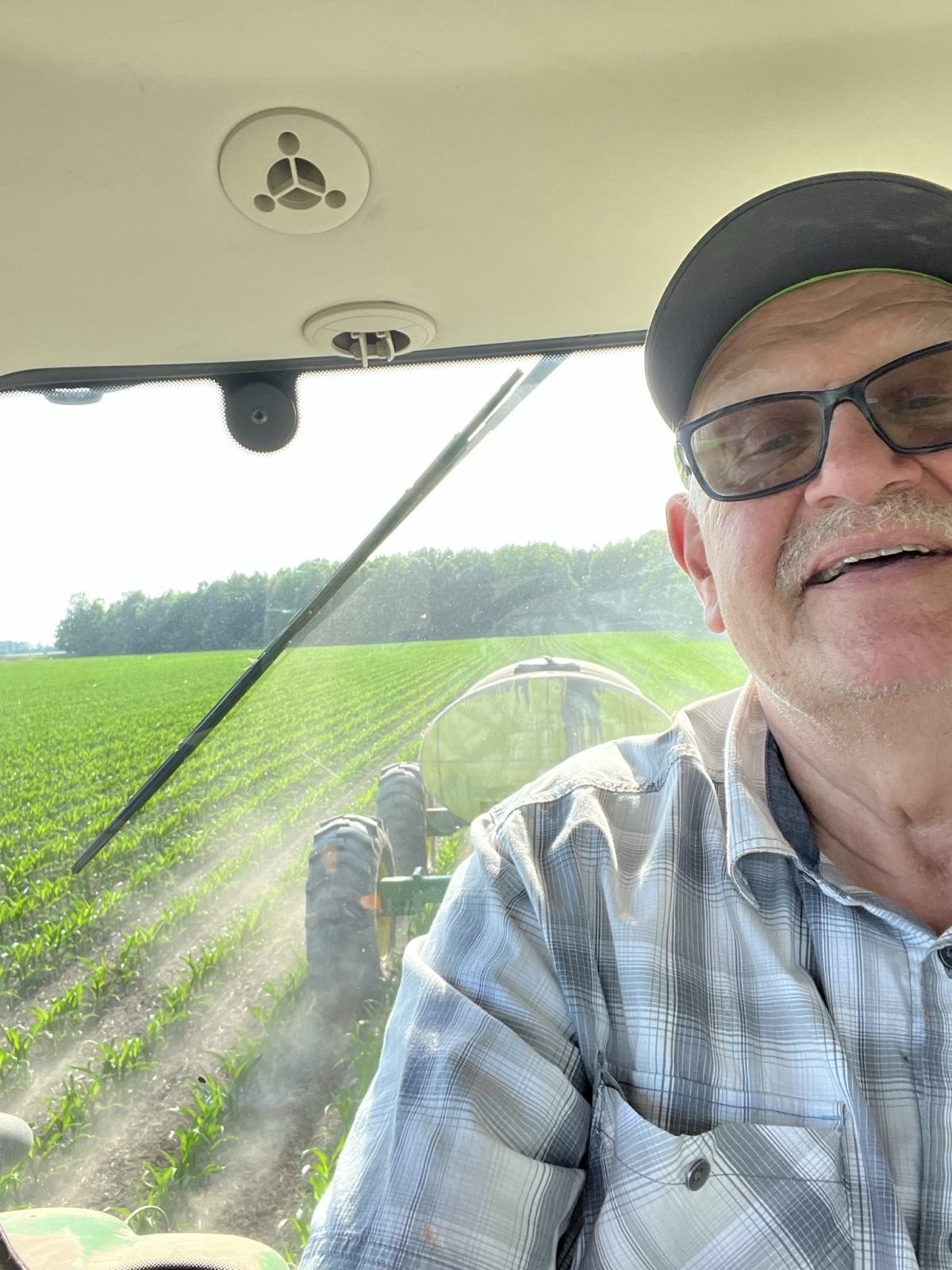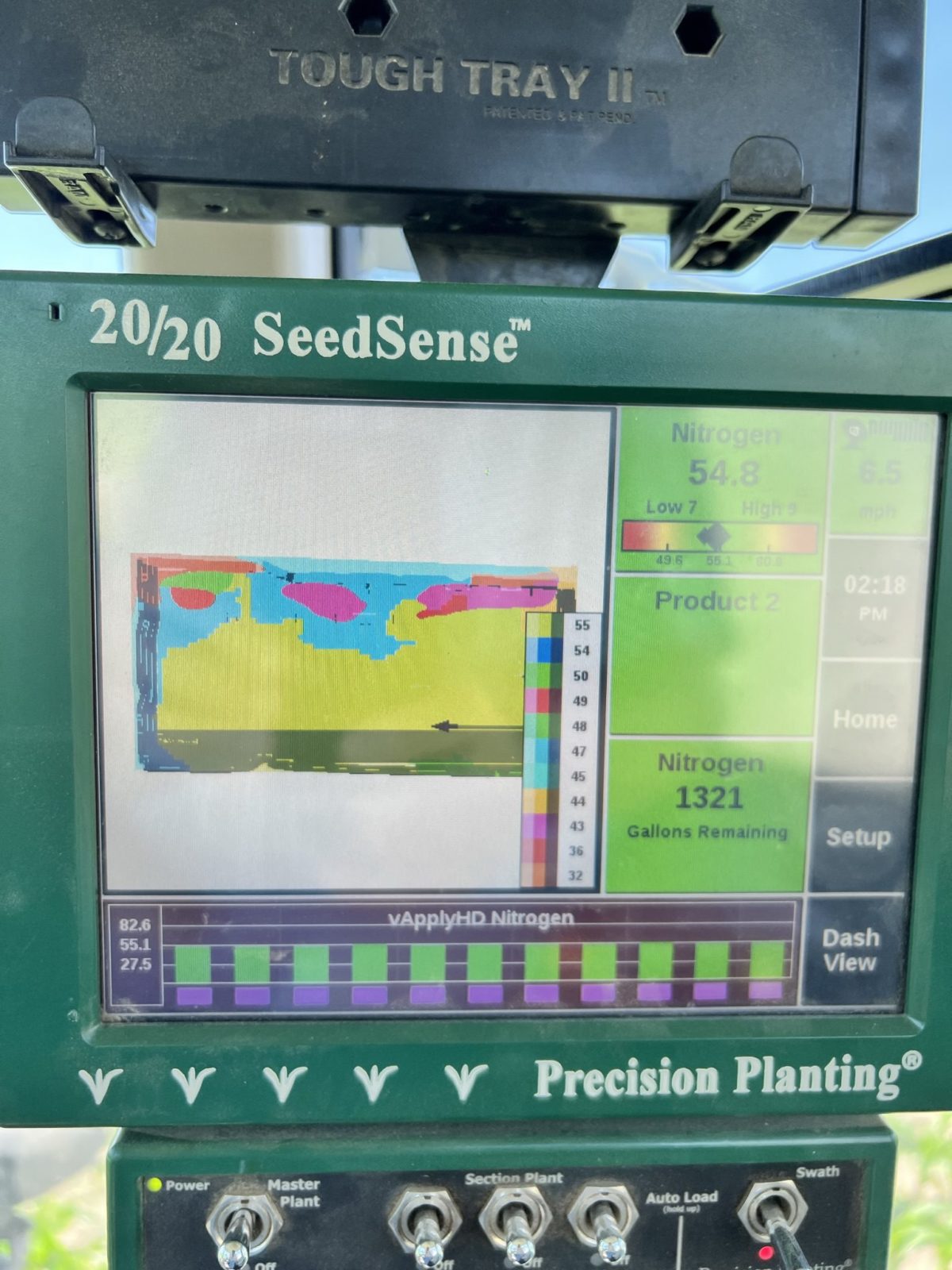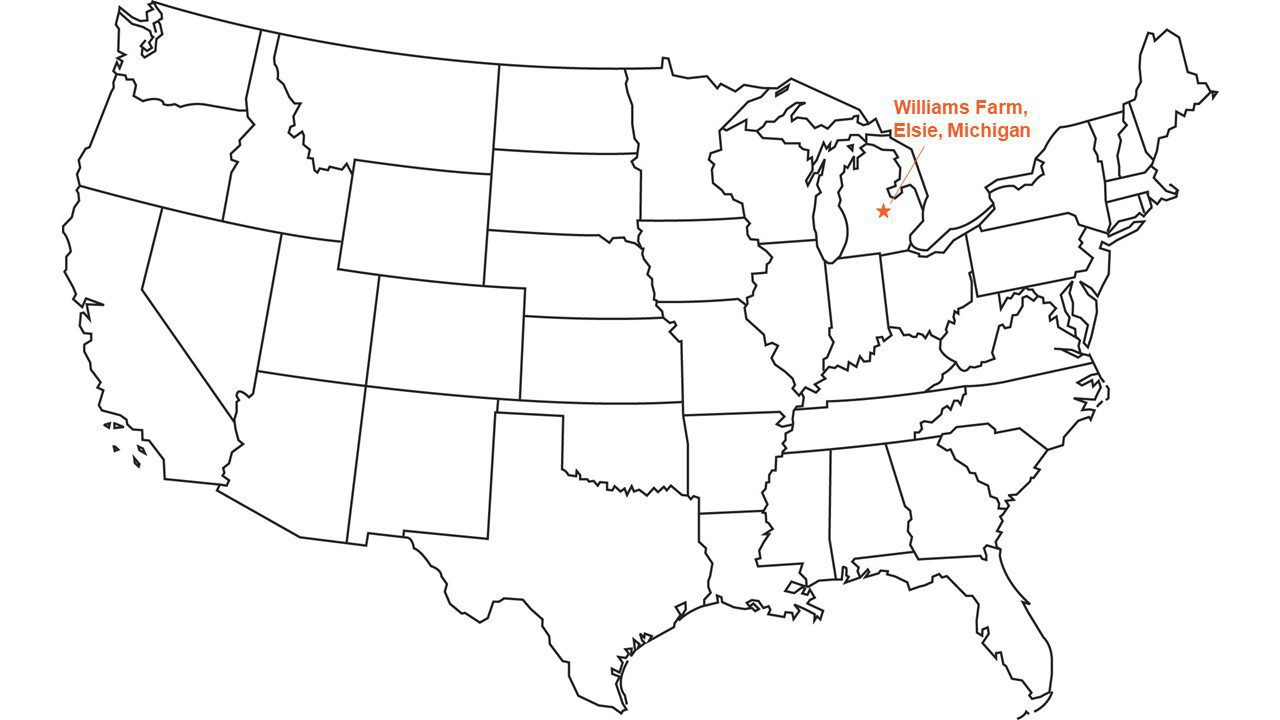Our weather continues to influence how we are managing the 2022 crop on our farm in Michigan, in the eastern U.S. Midwest. Our crops are about a month behind average, but I am optimistic that we are doing our part to ensure a good crop.
We finished planting soybeans at the beginning of June, including rolling the fields to push rocks into the ground for a smooth harvest.
Then we finished planting corn on June 5. The crops look ok so far. After a very wet spring, we are now bone-dry, and temperatures have been hot. We need timely rains. Because our planting was very spread out this spring, both our soybeans and corn are in a variety of growth stages.
Most of the soybeans have emerged, and are between the V1 to V3 growth stages, or from having just the first trifoliate, or set of three leaves, unfolded on the main stem to having three sets of leaves showing. Though I have yet to scout carefully, I think some of the later-planted soybeans may even be waiting for moisture before they emerge.
In soybeans, I have been focused on weed control. Thankfully, our soybeans aren’t very weedy, but because it is dry, we want the fields to be weed-free. We are monitoring the fields, and as weeds show up after planting, I am applying post-emergence herbicide to prevent the weeds from competing with the soybeans for moisture and nutrients.
 In many of the fields that haven’t received a post-emergence herbicide yet, I am waiting for the timing to be right to make that herbicide application. Herbicides don’t usually work well when it is really hot. The weeds need to be actively growing to take in the herbicide, which then interferes with weed growth to control it.
In many of the fields that haven’t received a post-emergence herbicide yet, I am waiting for the timing to be right to make that herbicide application. Herbicides don’t usually work well when it is really hot. The weeds need to be actively growing to take in the herbicide, which then interferes with weed growth to control it.
Meanwhile, I have been side-dressing our corn with a form of liquid nitrogen that we were able to store over the winter. The nitrogen is mixed with sulfur to provide the nutrients the corn needs when it is 25 to 30 cm, or 10 to 12 inches, tall.
Feeding our corn is one area that contributes to our sustainability, while still producing a high-quality, high-yielding crop. My nephew Brian has two hog barns, and we applied manure from those barns to some of our corn fields last fall and this spring, as conditions allowed. The manure provides macro- and micro-nutrients and organic matter to the soil.
 We then test the soil in our corn fields when the corn is emerging, about two weeks before we plan to side-dress it with the rest of the nitrogen it needs for the year. Based on these soil tests, our agronomist uses software that combines those results with other management factors to create a prescription map. That map allows our fertilizer application equipment to apply just the right amount of fertilizer in the right place. Fields with manure vary less than fields that didn’t receive manure, but regardless, variable rate technology allows us to produce more corn with fewer resources.
We then test the soil in our corn fields when the corn is emerging, about two weeks before we plan to side-dress it with the rest of the nitrogen it needs for the year. Based on these soil tests, our agronomist uses software that combines those results with other management factors to create a prescription map. That map allows our fertilizer application equipment to apply just the right amount of fertilizer in the right place. Fields with manure vary less than fields that didn’t receive manure, but regardless, variable rate technology allows us to produce more corn with fewer resources.
In mid-June, we did our first cutting of alfalfa, a few weeks later than average. We bale the alfalfa into large square bales that we sell for feed to a dairy less than 4 km, or about 3 miles, away from our farm. I expect that we will do the second cutting of the year between July 10 and July 15.
Despite the dry weather, I am hopeful about this season. Farmers like me tend to be eternal optimists. The ground is dry enough that it can soak up even a heavy rain event with very little runoff. With timely rains to keep things growing, we can have a good year. We are doing our best to raise soybeans that provide food, protein and oil for customers around the world.

